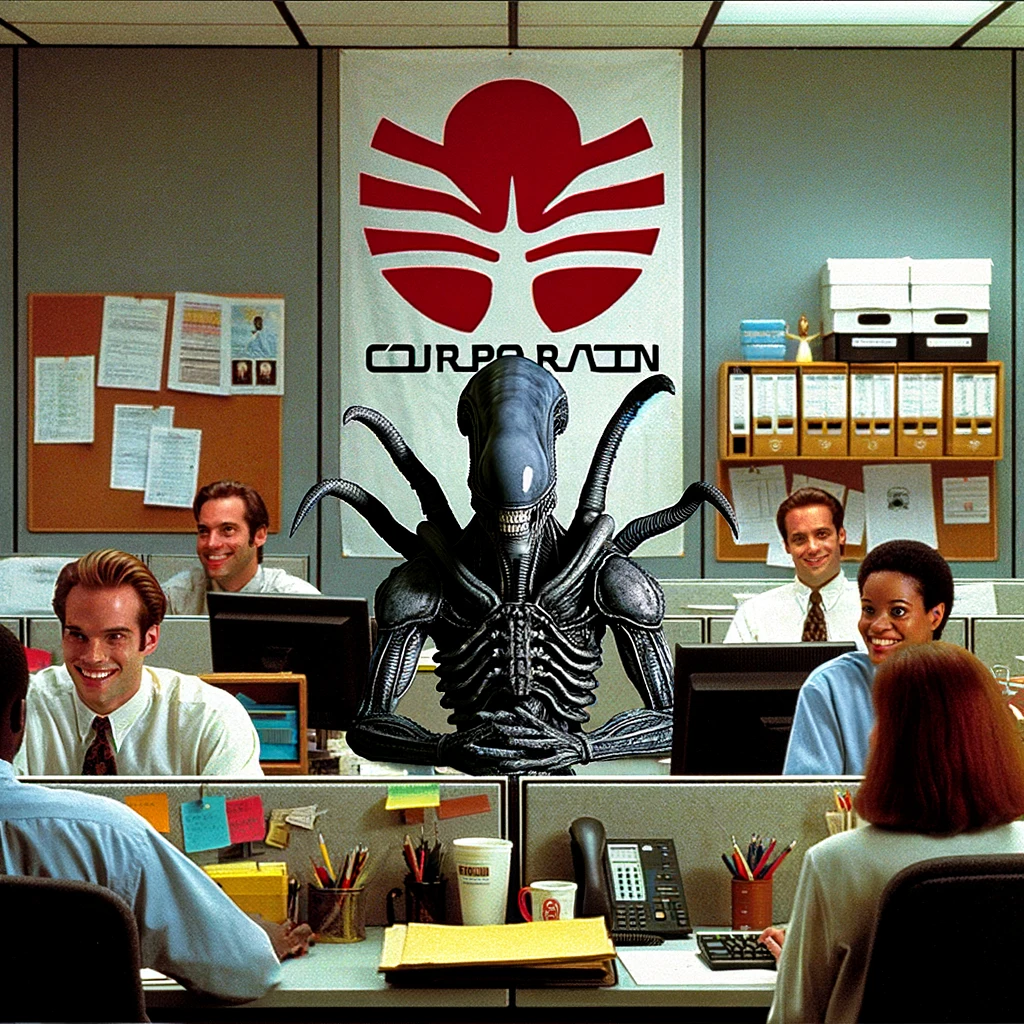If anyone wants to give an ELI5 or a link to a video that ELI5 I’d be incredibly thankful
I swear that all the stuff I find is like super in depth technical stuff that just loses me in no time flat
it’s Xorg’s opponent. The challenger.
Does it have more ships, more planetary systems under its thrall?
now you’re speaking my language
Wayland is X11’s little brother.
Basically, you should try it, if it works, keep using it; if it doesn’t, switch to xorg to see if that fixes your problem.
Wayland is newer, have better support for multi-monitor, and application cannot see what you are typing in other app (so they cannot log your key and send your password to someone else).
have better support for multi-monitor
In my experience, it’s way worse than Xorg. With Wayland, I cannot turn off my laptop screen but keep the external display, and having both monitors on at once can cause crashes when GPU acceleration is needed (videos or games). Somehow this is nVidia’s fault, yet it works on Xorg with the same hardware.
I use a laptop to run home console, and its display can turn off just fine.
I was intentionally vague in my response, since I don’t want to confuse the reader. Specifically, the improvement I was referring to is when you run two monitor with different refresh rate or different scaling factor.
If a driver doesn’t behave properly, the things that are built on top of it won’t work properly either. When that misbehaving driver is not open source, you’re at the mercy of the vendor… It’s common knowledge for over a decade that nVidia drivers are problematic with Linux - especially on laptops. Bad drivers are entirely nVidia’s fault.
I’ve been running Wayland with Intel graphics on my laptop and my desktop runs a Radeon. I’ve had 0 Wayland issues in the past years.
deleted by creator
It is the same on Windows, people can put a ahk script in your autostart, logs your password and send it to anyone on the internet, all without even invoking UAC.
So yeah, wayland is kind of important…
Is there a way to designate specific programs to be able to still have global access to your input? For instance specifically for AHK-type activities.
Yes, on wayland you will need to run a particular program as root to be able to read all keyboard input. See xremap or mouseless (unmaintained).
Since you already give the program plenty of trust to let it read all your inputs, I think running it as root is not outrages.
That being said, in an ideal scenario, we would be able to set fine-grained permissions like, allow to read keyboard input but deny communication with other app, networks, and storage etc. But I don’t know any OS that can do this.
A more straightforward way to remap key is to get a keyboard with QMK firmware, that doesn’t cover all the use case of ahk, xremap, or mouseless, but that don’t require you to trust another program to run as root.
Like you are 5: Wayland is the thing that brings the beep boop from the computer to a screen. It’s the son/daughter from Xorg which is old af, and needs to die because no one wants to work on it trillions lines of code.
Like you are 5: Wayland is the thing that brings the beep boop from the computer to a screen. It’s the son/daughter from Xorg which is old af, and needs to die because no one wants to work on it trillions lines of code.
I’ll try to explain:
In the past we only had text terminals without a graphical interface ~1990 (sh / bash / tty). so the display server (Xorg / formaly known as X11) was born. it’s a piece of software that allows programs to not only print text to screen but to draw complex geometrical shapes. This allowed for gui programs that use frameworks like qt or gtk or motif… to draw buttons and shit using Xorg.
For having mutliple “windows” / “programs” running they invented a window manager, that drew a border around the windows with some min / max /close buttons and the modern gui was good to go. btw. the next step are desktop environments like kde or gnome but that would be too much for this post.
Back to display server (Xorg) and window manager (kwin, mutter, metacity, dwm, awesome, i3…): the design of xorg is super old and has many shortcomings like hdr, variable refreshrate or security: every window can read the contents of or produce input for other windows which is a nightmare for todays security standards.
So wayland was invented to use state of the art concepts and design. Here comes the big problem: State of the art concepts required wayland to not be a display manager like Xorg. wayland is more like a protocol that defines how to draw windows, resize and close them or how they are allowed to talk to each other. Since wayland is only a protocol+ the window manager now needs to do the heavy lifting of coordinating this protocol, drawing and stuff like that, which in turn results in way less window managers that support wayland because they are complex as hell.
Since modern software needs to support a heck of a lot of different ways for applications to interact with each other rewriting these functionality for wayland needs time. thats the reason desktop sharing/recording or muting your mic with a keyboard shortcut when the webex window was not in focus wasn’t possible at first. new solutiones needed to be developed for that (pipewire for example). Many programs would run in an xorg window that was implemented as a wayland window (xwayland) which made transitioning to wayland much easier but introduced new problems.
At the moment we are in a transitional phase. many programs already work without problems, but many software still require features wayland doesn’t have and might never implement. Everyone needing that software is hating on wayland. everyone needing variable refreshrate, fractional scaling or security prefers to use wayland. And the fighting begins.
Disclaimer: There might be errors, simplifications or misunderstandings on my side but thats the way i understood if. Feel free to correct any mistakes on my part.
I read this with the voice of the narrator in the Animatrix movie.
For having mutliple “windows” / “programs” running they invented a window manager (and for a time, it was good)
I hope this made it more enjoyable to read. English is not my first language
I wouldn’t have guessed that!
Wayland Jennings, a great country singer
Just don’t ask what hyprland is.
XOrg and Wayland are two different programs that serve the same purpose, which is to act as a sort of middleman between the graphics driver, the window manager(s), and the many programs you’re running.
XOrg is ancient. Early 80s ancient. It’s been added to since those days as need arose, and is therefore full of weird messy legacy stuff and jury-rigs. But it is also what Linux has used for a very, very long time, and is therefore like. Ol’ Reliable workhorse, yanno?
Wayland is a new and bold step that rewrites the entire system from the ground up to address the shortcomings of XOrg (don’t ask me to specify, I actually don’t know), it has, however, been criticised for not having (and devs downright not wanting it to have) certain features that XOrg has. But it can also run applications that expect XOrg with a thing (jargon escapes me) called XWayland.
Personally I’ve used both. And… Uh…
Wayland was a bit faster and smoother maybe? But it also caused some specific applications to misbehave and get all crashy-buggy. But that was a personal experience and may well have been my fault.
Wayland is not a single program. It’s specification and set of basic client/server libraries that can be used to implement a compositor. Compositor are implementations of the Wayland protocol and there are multiple such programs that are different one from another, but generally serve the same purpose and are compatible with the same clients. General idea behind Wayland compositor is that it blends images from different clients into single frame that is then sent to kernel
cursor.
Wayland is not a program, it is a protocol. The implementation is in the desktop or Window manager.
Wayland is a lot more secure and the way it handles clients is a lot more sane in todays age, but thing is, it is a hell of a lot more complicated if you come from a window manager background, and your choice of applications is incredibly small. Sure you can run a lot of your stuff in XWayland, but what exactly is the point of running wayland if you are going to run less secure X apps with 94% of the same vulnerabilities?
X is less secure, but the security of your system from the outside is far *faaar more important than the security on the inside. Only when an intruder actually infiltrates your system do you have a real concern, and that’s only talking about remote access. Physical access given enough time is root access.
A lot of people tout X as being considerably more bloated than wayland which is why the project is basically in maintenance mode, wayland is definitely a lot quicker than X, but X has many reasons including support from literally every single linux application out there, something wayland is very likely never going to acheive even with XWayland.
This is false. X is not less secure than Wayland. It does have a different security model, which can become insecure if you misuse it. I don’t think people really care about situations where multiple user accounts access the same display.
In my opinion, the benefits of xdotool far outweigh any benefits gained by Wayland’s security model. It’s impossible to make xdotool in Wayland, because of its security model.
X is inherently less secure due to the fact alone that, given enough time, new vulnerabilities will come out that will not be patched because X11 is EOL. Yes it has a different security model, but that security model is not very well implemented because X has an enormous code base that, at the end of the day is still not bug free (nothing is). There is a lot of legacy code contained in X that legitimately does not even have a function because there is nothing around today to use it.
Larger codebase = more moving parts = more code to exploit. That’s the benefit to wayland aside from active support by the X/Wayland devs.
Almost all my apps are Wayland native
what exactly is the point of running wayland if you are going to run less secure X apps with 94% of the same vulnerabilities?
When running Wayland, one X server is started per X application. So that application won’t be able to e.g. keylog others.
I personally don’t care about security here, it’s all about a flicker free Multi-monitor experience with different refresh rates per monitor. X just can’t do that under any circumstances.
I run X in a multi monitor setup with different refreshrates AND resolutions and it is flicker free, I think that honestly is something that comes down more to your window manager or even your graphics rather than just X itself.
That particular vulnerability is one of the 6% that Wayland doesn’t have.
Do you have separate scaling factors on the two monitors? I need 100% scaling on one and 175% scaling on the other, which I’ve not been able to figure out under x11
Yes, one is scaled 2x, I have a 4k60 and a FHD165. I’d recommend doing this with your autostart script using xrandr
Ah, right. That’s fine with integer scaling, but if you try to use fractional scaling with xrandr, it gets all blurry. I’ll consider 2x scaling though
1.5 scaling works too, I’ve done it with my laptop with qhd and fhd
I mean I’d be happy to hear the other vulnerabilities then, cause I find it fairly unbelievable you can know how they’re handled on every single Wayland compositor
You’re missing the point. When you run an x client in wayland, you are still running an x server. Every vulnerability an x server has, xwayland has. I don’t need to name anything specific because you can legitimately go and look this up yourself.
Don’t think you are fully safe from keylogging in xwayland either, you are only safe from keylogging in wayland apps, xwayland clients can keylog other xwayland clients because x servers can see other x servers, in other words, they are all still very much running seperate PIDs on your system which means at the very least they can still touch each other. XWayland, by default, does not really sandbox clients because why exactly would it need to? Do you realize exactly how much of a feat that would take to truly isolate an x server from the rest of your system? That is an inherent flaw with X itself because X never set out to acheive those goals in the first place.
If you are at the point where you have to be worried about protecting your xsession or wayland session, you need to make a fresh install and tighten your security accordingly. All that tightening down your window manager does is make an attacker go for a lower hanging fruit on your system, that’s why you should make your machine unfeasible to even attack in the first place. You can go run around and try to tighten every little nook and cranny, but if someone is determined to get into your system, they will eventually get in. The malicious parties we are trying to defend against with general security practices are not nation state hackers, they are skids and standard malware.

What is Wayland? It is such a basic concept I don’t need to explain it to you. Of course I understand it.
The end goal of wayland is that you shouldn’t ever have to know what it is.
deleted by creator
it’s like fight club, but don’t tell them i told you 😳💦
Wayland is basically just X12
If they named it X12 this would have been so much smoother











